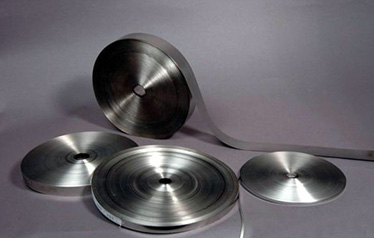Better Touch Better Business
Contact Sales at TRANSMART.
The preparation method of nanocrystalline magnetic core processing and cutting, especially the preparation method that can improve the magnetic permeability of the magnetic core.

In recent years, amorphous magnetic cores have become popular for their high saturation magnetic induction, low high-frequency loss rate and excellent frequency characteristics. In many fields, amorphous magnetic cores have begun to replace traditional magnetic cores of inductive materials, such as iron oxide and magnetic powder cores. At present, the preparation steps of the amorphous magnetic core include solidifying the amorphous alloy and then cutting. The actual production process is still in accordance with the traditional method of preparing the iron core to prepare the amorphous and nanocrystalline magnetic cores. Very low, and the temperature performance is very poor, can not meet the requirements.
The traditional magnetic core curing process is that the iron core is vacuum impregnated for about 30 minutes and then sprayed at room temperature. The spraying time is about 30 minutes, and then it is directly put into an oven and baked at about 130°C for 5 hours for curing. The disadvantage of this process is that ordinary paint cannot completely remove the excess glue contained in the iron core. Another fatal disadvantage is that the excess glue paint during the period when the iron core rises from room temperature to the curing temperature (for example, 130°C) It flows out from the inside of the iron core, causing the final surface of the iron core to be dirty and lacquered, which affects the subsequent cutting accuracy.
In the traditional curing process, epoxy resin is often used as the binder of the magnetic core. Epoxy resin has the characteristics of good chemical stability, strong adhesion, and excellent electrical properties. However, the commonly used curing agent for epoxy resin is low-molecular polyamide. The viscosity of low-molecular polyamide is too large. It has poor fluidity and low permeability during the dipping process. The crystalline strip produces a lot of stress, and because the amorphous and nanocrystalline strips are sensitive to stress, studies have shown that with the increase of the curing agent viscosity, the loss rate of amorphous iron core and nanocrystalline iron core increases. The rate of change of permeability increases. Therefore, low-molecular polyamide is used as the curing agent, and the stress generated during the curing process will reduce the magnetic properties of the iron core after curing.
The traditional method of cutting the magnetic core is to cut with silicon steel sheet. The cutting surface of the magnetic core will produce air gaps and burrs, which will result in low permeability and poor temperature characteristics of the magnetic core, which cannot meet the accuracy level and temperature of transformers, sensors and other devices. Characteristics and miniaturization requirements.
For this reason, it is necessary to design a preparation process suitable for nanocrystalline magnetic cores, and the process must be a method that can effectively improve the permeability and endurance of nanocrystalline magnetic cores.
Copyright © 2025 TRANSMART INDUSTRIAL LIMITED | All Rights Reserved
Hello, please leave your name and email here before chat online so that we won't miss your message and contact you smoothly.